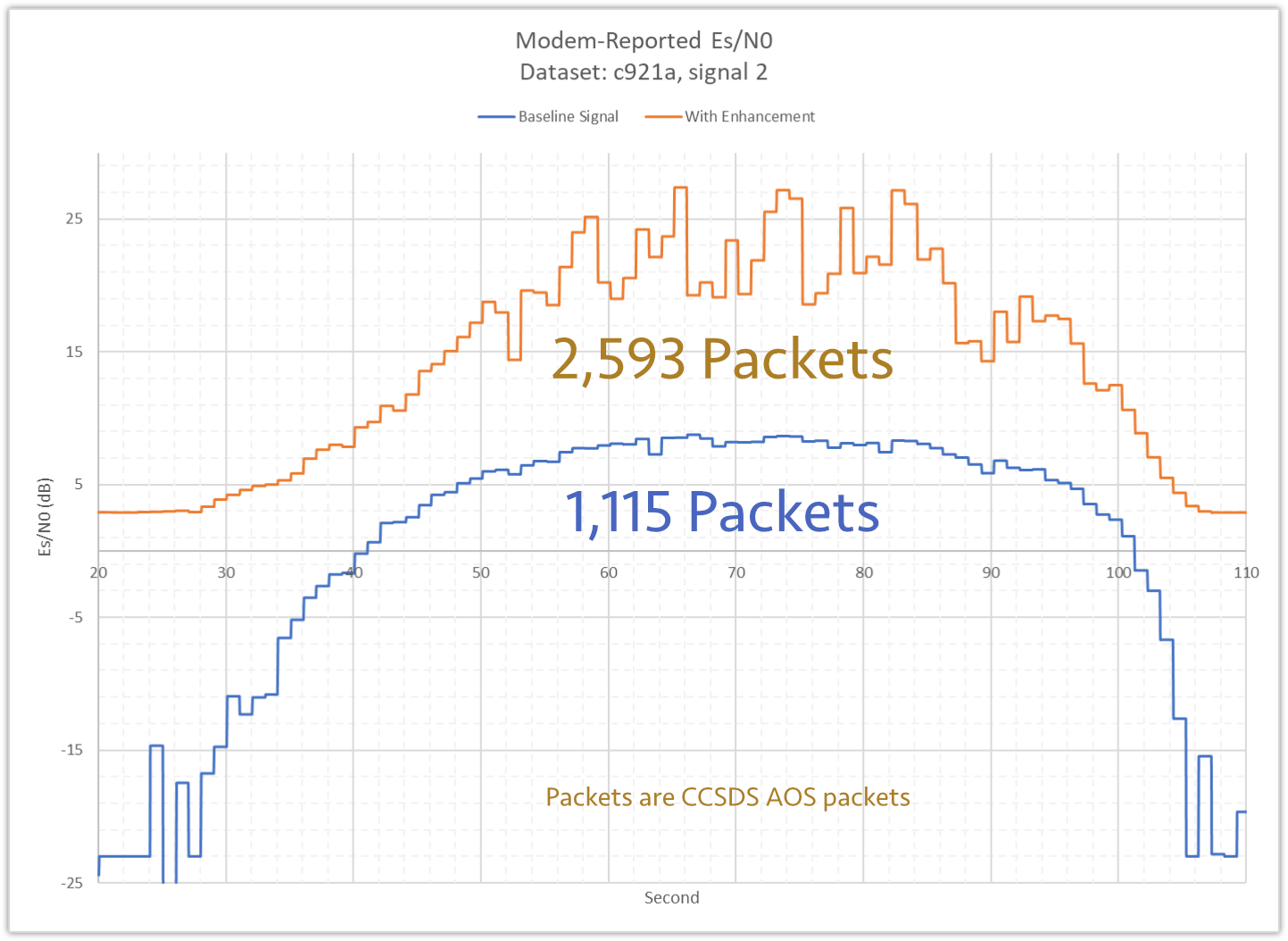
Signal Enhancement
Miles Space’s signal enhancement algorithm substantially improves the bit error rate of received BPSK and QPSK radio signals, while staying agnostic to the underlying radio hardware. Doing so allows small antennas to successfully receive weak signals. Applications include:
Use smaller, lighter receive antennas
Relax pointing accuracy demands
Access more distant sources
IoT with low power transmissions
Resilience against antenna damage in remote locations
Real World Results
Miles Space’s signal enhancement algorithm was applied to LEO satellite downlink signals received from phased array panels in an urban environment.
Nearby buildings, metallic reflectors (cars), trees, lampposts, etc. provided multipath interference. Nearfield obstructions caused differing views of the passing satellite from each antenna.
All S-band raw signals from LEO satellites were captured and processed with a cloud based modem. After which, signal enhancement was applied and reprocessed.
The baseline hardware yielded 1,115 signal packets. The use of Miles Space’s Signal Enhancement product resulted in 2,593 packets, an increase of 132% in information yield.

Miles Space’s signal enhancement algorithm substantially improves the bit error rate of received BPSK and QPSK radio signals, while staying agnostic to the underlying radio hardware. Doing so allows small antennas to successfully receive weak signals. The ability to work with weak signals enables relays from other small spacecraft with their limited transmitter power. It also enables reception with less than perfect pointing, relaxing the navigation and pointing accuracy needed to close a link. These in turn drive down mission cost, improve mission success probability, and open options for mission designers to get the most value from the limited size of a small spacecraft.
The algorithm works through symbol aware oversampling. It can reliably find the start and end points of BPSK, QPSK, PSK, and QAM symbols in very weak signals, then improve signal to noise by combining samples within the symbols, preserving RRC and other pulse shaping. These two abilities, symbol awareness in weak signals and preserving pulse shaping, separate the algorithm from more common oversampling techniques that erode symbol boundaries and broaden spectra by undoing pulse shaping.
The Signal Enhancement software product is fundamentally agnostic to the signal source. It can work with digitized signals from parabolic dish antennas, phased array panels, log periodic directional antennas, etc. The improved signal can be streamed digitally to a modem, stored to file, or converted to analog RF via a SDR radio.
The enhancement process preserves Doppler shift, enabling existing trajectory and tracking software already present in modems. Enhancement does not use any protocol-specific information, making it compatible with PSK and QAM, even if encrypted. No training symbols or QoS packets are required.
The Signal Enhancement software has been successfully demonstrated under an Air Force phased array project with ATLAS Space Operations.
The Signal Enhancement technology is available for applications in ground-to-space, space-to-space, and ground-to-ground.
Digital Streaming: Custom high speed UDP currently, Vita-49 streaming available.
Output Types: Digital streaming or analog via Ettus USRP SDR radios.
Custom implementations are available from in-house development staff.
Contact us about your application.
